A Tale of Two Cities

Brief Synopsis
Cast & Crew
Jack Conway
Ronald Colman
Elizabeth Allen
Edna May Oliver
Reginald Owen
Basil Rathbone
Film Details
Technical Specs

Synopsis
Just before the outbreak of the French Revolution, Lucie Manette, a French girl reared in England, is shocked to learn from the banker Barsad that her father, Dr. Manette, is alive, but has been imprisoned for eighteen years in the infamous Parisian prison the Bastille. She accompanies Barsad to Paris and finds her father, now a broken man, staying with tavern owners named De Farge who are secretly working towards the revolution. On their return to England, Lucie meets Charles Darnay, the idealistic nephew of the vicious Marquis St. Evremonde, and the two fall in love. Charles is arrested for treason on his arrival in England, a charge perpetrated by his uncle. He is found not guilty through the cunning of Sydney Carton, a cynical, alcoholic lawyer. Sydney secretly loves Lucie, and although she only regards him as a close friend, he briefly gives up drinking to please her. Sydney is deeply hurt when Lucie marries Darnay, but he remains devoted to her as well as her daughter Lucie who is born a few years later. The Reign of Terror has now begun in Paris, and Darnay is tricked into returning to France for trial as an enemy of the Revolution when his old tutor Gabelle innocently writes to him asking for help. Although the marquis has already been murdered for his crimes, the citizen's committee seeks revenge. Despite his emotional pleas, Dr. Manette cannot persuade the citizens to find Darnay not guilty after an impassioned speech by Madame De Farge, whose brother and sister were victim's of the marquis' cruelty. Darnay is then sentenced to death on the guillotine for his only crime, that of being the last surviving Evremonde. As Lucie despondently awaits her husband's death, Sydney realizes that the child Lucie's relationship to the Evremondes endangers even her, so he arranges for them to leave Paris. He also realizes that he can save Darnay by going to the Bastille and switching places with him. Because Darnay and Sydney physically resemble each other, the trick is successful, and Darnay is able to escape with his family to England. As Sydney faces his execution, he befriends a frightened seemstress who seems to gain strength from his presence. As he approaches the guillotine the next morning, Sydney holds the seamstress close to him and knows that he has done the right thing.

Director

Jack Conway
Cast

Ronald Colman

Elizabeth Allen

Edna May Oliver

Reginald Owen

Basil Rathbone
Blanche Yurka

Henry B. Walthall
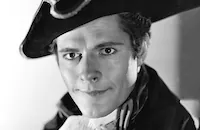
Donald Woods

Walter Catlett

Claude Gillingwater

H. B. Warner
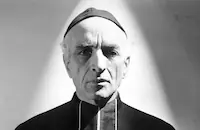
Fritz Leiber

Lucille Laverne
Mitchell Lewis

Isabel Jewell

Tully Marshall
Fay Chaldecott

Billy Bevan

E. E. Clive
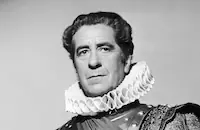
Robert Warwick

Eily Malyon

Lawrence Grant

Ralf Harolde
John Davidson
Tom Ricketts
Donald Haines
Barlowe Borland
Rolfe Sedan
Ed Peil Sr.
Joseph R. Tozer
Edward Hearn
Judith Vosselli
Burr Carruth
Marion Lessing
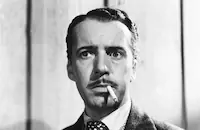
Boyd Irwin Sr.
Charles Requa
Sam Flint
May Beatty
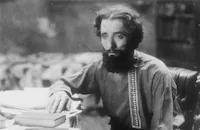
Nigel De Brulier
Jay Taylor
Winter Hall
Laura Treadwell
Ramsay Hill
Chris Frank
Cyril Mclaglen
Frank Dunn
Torben Meyer
Richard Alexander
Montague Shaw

Walter Kingsford
Frank Mayo
Chappell Dossett
Shirley Mcdonald
Mary Foy
Dale Fuller
Tempe Pigott
James T. Mack
Frank Dawson
Harold Entwistle
John Miltern
Elsa Buchanan
Yorke Sherwood
St. Luke's Choristers
Chet Withey
Barbara Barondess

Brandon Hurst
Norman Ainsley
James Marcus
Clinton Lurie
Crew
S. N. Behrman
Howard Dietz
Cedric Gibbons
Fredric Hope
Robert Z. Leonard
Val Lewton
W. P. Lipscomb
Oliver T. Marsh
Conrad A. Nervig
David O. Selznick
Douglas Shearer
Herbert Stothart
Jacques Tourneur
Dolly Tree
Western Costume
Edwin B. Willis

Photo Collections
Videos
Movie Clip





Trailer
Hosted Intro
Film Details
Technical Specs

Award Nominations
Best Editing
Articles
A Tale of Two Cities (1935)
Selznick's legendary micromanagement, often a thorn in the side of those who worked with him, resulted in a stroke of luck for one actress. Isabel Jewell, who played the small but notable part of the seamstress who shares Sydney Carton's fate in prison, later recalled that Selznick personally lobbied for her to be cast in the part.
Up to that time, as Jewell later remembered, she had "played rip-roaring comedy stuff and Jack Conway (director of the film) would say to me, 'You're a marvelous little comedienne, but you can't play the part of a seamstress.' He refused to give me an audition." But Selznick prevailed and her audition was a success. Colman himself delivered the good news, dropping by her dressing room to tell her: "Isabel, I asked Mr. Selznick if I could come and tell you we have just seen your test of the seamstress and I am so happy that you are going to do the part." Jewell would go on to play opposite Colman again in Lost Horizon (1937) and also play Emmie Slattery in Selznick's greatest success, Gone With the Wind (1939).
Second-unit director Jacques Tourneur (Cat People, 1942; Out of the Past, 1947), responsible for shooting an exterior scene outside of the studio, held up shooting because of rain that persisted for five straight days. Selznick's memos -- signed DOS -- arrived daily to goad Tourneur into finishing shooting no matter what the weather. A frustrated Tourneur turned the tables on his boss, firing off a memo stating that he could not control the delay due to "an act of GOD," signing off in an imitation of the producer's familiar style.
Selznick's obsessive habit of voicing his wishes through voluminous memos later garnered the wrath of MGM's publicity department. After the film was wrapped, the concerned producer sent missives pleading that although he was departing MGM and "[would] not be here to fight the battles of A Tale of Two Cities [make] sure that it is handled properly by the sales and advertising departments.... I hate to make my valedictory to the company a letter of bitter complaint." Miffed at finding the note carbon copied to executive staff at the studio, Howard Dietz, of the PR department, fired back, "I have tried to figure out why you've been so ignored and decided that it was that shy, shrinking personality of yours...." Angry memos were again exchanged, and finally, Selznick, on the advice of his wife (literally, the boss' daughter, Irene Mayer), offered conciliatory best wishes for the film and departed for his own offices at the newly created Selznick International Pictures.
Sometimes Selznick's attention to detail could be maddening, but because his concentration was divided between the production and setting up his own company, A Tale of Two Cities contains a few questionable details. For example, in the scene of the storming of the Bastille, male stuntmen dressed as women noticeably betray their true gender; when Madame Defarge and Miss Pross fight each other in a climatic scene, their stuntmen doubles are painfully obvious. But, according to Selznick, the audience at the Long Beach sneak preview, mostly composed of rowdy sailors and their dates, loved every minute of it.
Producer: David O. Selznick
Director: Jack Conway
Screenplay: S.N. Behrman
Art Direction: Cedric Gibbons, Frederic Hope, Edwin B. Willis
Cinematography: Oliver Marsh
Editing: Conrad A. Nervig
Music: Herbert Stothart
Principal Cast: Ronald Colman (Sydney Carton), Elizabeth Allan (Lucie Manette), Edna May Oliver (Miss Pross), Reginald Owen (Stryver), Basil Rathbone (Marquis St. Evremonde), Blanche Yurka (Madame Defarge), Henry B. Wathall (Dr. Manette), Donald Woods (Charles Darnay), Isabel Jewell (Seamstress), Lucille La Verne (The Vengeance).
BW-127m. Closed captioning. Descriptive Video.
by Genevieve McGillicuddy

A Tale of Two Cities (1935)
Motion Picture Masterpieces - MOTION PICTURE MASTERPIECES - 5 MGM Favorites on DVD Including "David Copperfield" & "Pride and Prejudice"
Hollywood's first movie version of Pride and Prejudice, directed by Robert Z. Leonard and released in 1940, has never been topped. One reason is superb production work by art director Cedric Gibbons, costume designers Adrian and Gile Steele, and cinematographer Karl Freund, who forgoes his German Expressionist roots to capture exquisite images of England in the early 19th century. The film's other big triumph is its cast, topped by Greer Garson as lively, lovely Elizabeth Bennet and Laurence Olivier as her prideful suitor Mr. Darcy, an ideal role that elicited one of his most restrained and refined performances. The movie adds gimmicky episodes for visual excitement-a carriage race, an archery contest-and sugar-coats the ending. But it's terrific entertainment anyway.
Marie Antoinette, directed by W.S. Van Dyke in 1938, turns the MGM design team loose on the sumptuous Versailles Palace in 18th-century France, where our heroine copes with a hapless husband, falls for a Swedish aristocrat, outgrows youthful irresponsibility to become a compassionate queen, and faces the guillotine after the French Revolution erupts. Norma Shearer is excellent in the title role. Tyrone Power plays the underwritten Count Axel with elegance and charm. And many scenes get stolen by Robert Morley as the Dauphin, a tragicomic character who's heading for the throne but can't figure out how to consummate his marriage. This opulent production is more conventional than the 2006 remake by Sofia Coppola, but just as absorbing. MGM had a flair for the French Revolution, giving it even stronger treatment in Jack Conway's marvelous 1935 version of Charles Dickens's novel A Tale of Two Cities, starring Ronald Colman as the self-sacrificing hero. It's also in the Masterpieces set.
It's hard to beat the story of Treasure Island, with brave young Jim Hawkins setting sail on a pirate-infested ship in search of the legendary Captain Flint's buried hoard of gold and jewels. The best asset of MGM's uneven 1934 version is the supporting cast, especially Nigel Bruce as likable Squire Trelawney and Lionel Barrymore as Captain Billy Bones, the rowdy buccaneer who sets the tale in motion. The leads are less impressive, owing to MGM's not-so-great idea of re-teaming the stars of The Champ, a big hit three years earlier. Jackie Cooper expostulates "Bless my soul!" so often you want to hang him from the yardarm, and Wallace Beery makes Long John Silver more cuddly than a self-respecting pirate would ever want to be. The adventure was directed by Victor Fleming, and there's little to suggest he was just five years away from putting his signature on Gone With the Wind in 1939.
The Personal History, Adventures, Experience, & Observation of David Copperfield, the Younger, released in 1935, has always gotten extra points for featuring W.C. Fields as Mr. Micawber, a role he was born to play. In other respects, though, this is one of Hollywood's weaker Charles Dickens adaptations, and one of George Cukor's least memorable directing achievements. Picturesque posing carries more weight than sharp character sketching, and the atmosphere of Victorian England rarely comes alive. Solid work by Basil Rathbone and Jessie Ralph, as Mr. Murdstone and Nurse Peggotty, is overshadowed by lackluster acting from the likes of Roland Young and Lewis Stone, whose Uriah Heep and Mr. Wickfield make sadly wan impressions. Even the inimitable Fields gets weighed down by the screenplay, which cares more about the novel's catch-phrases than the context they need. What should have been a sparkling comedy-drama becomes a period piece that seems longer than its title, which at least has a truly Dickensian ring.
Each of the five Motion Picture Masterpieces discs has offbeat DVD extras. Some are connected with the features-versions of David Copperfield and A Tale of Two Cities made for 1930s radio-but the most fascinating are unrelated MGM shorts and animations from the period. Shorts like Two Hearts in Wax Time, about a drunk and a pair of mannequins, and The Spectacle Maker, about a magic monocle, are so bizarre it's hard to imagine what the filmmakers could have been thinking of. Ditto for a cartoon like Poor Little Me, starring Stinky, a skunk. There's also an "oddity" from Pete Smith that will make you look at stunt bowling in a whole new way, if you've ever looked at it in the first place. Singular items like these are worth the DVD price by themselves.
For more information about Motion Picture Masterpieces, visit Warner Video. To order Motion Picture Masterpieces, go to TCM Shopping.
by Mikita Brottman and David Sterritt
Motion Picture Masterpieces - MOTION PICTURE MASTERPIECES - 5 MGM Favorites on DVD Including "David Copperfield" & "Pride and Prejudice"
A Tale of Two Cities (1935) - Ronald Colman in the 1935 MGM version of A TALE OF TWO CITIES on DVD
Synopsis: Banker Jarvis Lorry (Claude Gillingwater) tells Londoner Lucie Manette (Elizabeth Allan) lthat her father Dr. Manette (Henry B. Walthall) didn't die in a French prison seventeen years ago, and is now in the care of Jacobin sympathizer Madame Therese Defarge (Blanche Yurka). Reunited and on their way back to England, Lucie, Jarvis, and Dr. Manette meet Charles Darnay (Donald Woods), a progressive French aristocrat who has changed his name to shed his association with his cruel and scheming brother, the Marquis St. Evrémonde (Basil Rathbone). The venal Evrémonde arranges for the paid perjurer Barsad (Walter Catlett) to testify that Darnay has stolen some English military secrets, but Darnay is saved in court by the crafty barrister Sydney Carton (Ronald Colman), whose job is to make it seem as if his employer C.J. Stryver (Reginald Owen) is the better lawyer. Carton's low self esteem and sense of purposelessness is alleviated by meeting Lucie Manette, with whom he falls in love. Lucie marries Charles Danay, so Sydney settles for the role of family friend devoted to Lucie's happiness. Five years pass. The Bastille is stormed and the French Revolution begins; Madame Defarge is now a leading member of the tribunal that is ordering hundreds of aristocrats to the guillotine. She tricks Danay's old tutor Gabelle (H.B. Warner) into sending for Danay. Danay heads for France, not realizing that Defarge wants revenge against all the Evrémondes for destroying her family. Dr. Manette and Lucie are quick to follow, accompanied by their daughter, Lucie's guardian Miss Pross (Edna May Oliver), and Jarvis Lorry. Will Charles Danay escape the guillotine?
Our high school teachers were fond of telling us that movies were no substitute for reading a good book, yet they'd surely have rushed to show A Tale of Two Cities class. It's one of several 'quality' productions by David O. Selznick that follow the original texts with the kind of fidelity shown in a Classics Illustrated comic book.
A Tale of Two Cities the book is divided into three major sections, Recalled to Life, The Golden Thread and The Track of a Storm. There's a great deal of plot here along with Dickens' signature web of interrelated characters. Charles Danay's true identity is hidden from most of the characters for quite some time, and the fierce Madame Defarge turns out to have a direct connection to the Evrémonde family as well. Although a wealth of detail is naturally missing, only a few of the book's major plot points are skipped. For instance, knave-turned-good guy Barsad is revealed to be Solomon Pross, Miss Pross's long-lost brother. Any more 'family surprises' and the characters would have to start comparing birthmarks.
Selznick gives the film a marvelous cast. Ronald Colman is the embodiment of Sydney Carton's disillusion. The only complaint with the writing is that Carton must twice telegraph his character arc by telling Lucie that he's willing to lay down his life for her and those she loves. Although the scenes are straight out of the book, in the compressed film they make Carton seem like a guy looking for an excuse to die. Carton has no inner conflict with his sacrifice. He merely stares with a melancholy satisfaction as he's shunted to the scaffold, and even affords himself the luxury of comforting a fellow condemned innocent played by Isabel Jewell (The Seventh Victim). The movie stays with Carton, withholding any reassuring return to the beneficiaries of his generosity -- an unusually mature ending for a studio film. The film's final Bible quote may play as a censor imposition, but comes straight from the book.
Carton is not the only main character in the book, and the movie robs Charles Danay slightly by not giving him a chance to object to Carton's dungeon swaperoo scheme. Almost everyone else benefits greatly from the adaptation. Elizabeth Allan must have taken her role in Mark of the Vampire as a trade-off for getting this plum assignment. Edna May Oliver is able to spice up a normally clichéd part by taking the offensive in the film's only fight scene. Basil Rathbone is properly hiss-able; after his coach runs down a little boy he reprimands the Paris rabble for risking injury to his horses. The interesting Blanche Yurka (Queen of the Mob) is a zealot with a heavy self-justification to murder every 'aristo' she can find. Lucille LaVerne is the much-imitated character called "The Vengeance," a toothless hag cackling insanely at every mention of the guillotine.
This is one of the MGM pictures that solidified David O. Selznick's reputation as a class-act producer. Although it only received two Academy nominations (the studio was probably too busy promoting Thalberg productions) it was considered a total success. Conrad Nervig earned his best editing nomination in the powerful second-unit storming of the Bastille sequence. To supervise that set piece Selznick assigned a young associate Val Lewton, who chose short-subject director Jacques Tourneur to direct. The association did both of them a lot of good, especially when Selznick generously awarded them screen credit.
Selznick's own artistic contribution can be gauged by his florid, silent-movie style inter-titles, still in use in 1935. Only David O. could fill a screen with dancing French aristocrats and then cover that with a text phrase reading, "But the approaching footsteps of a bitter people found no echo in the mincing measures of the minuet."
Warners' DVD of A Tale of Two Cities is a good encoding of a cleaned-up film element of acceptable quality. 1935 film stocks weren't the best for duplication but the picture holds up well. For extras, the disc includes a 2-D copy of what was originally a 3-D novelty short called Audioscopiks, a pair of color Harman-Ising cartoons featuring Bosko and some singing bees, a trailer and a Lux radio adaptation introduced by C.B. DeMille and starring Ronald Colman.
For more information about A Tale of Two Cities, visit Warner Video. To order A Tale of Two Cities, go to TCM Shopping.
by Glenn Erickson
A Tale of Two Cities (1935) - Ronald Colman in the 1935 MGM version of A TALE OF TWO CITIES on DVD
Quotes
It's a far, far better thing that I do than I have ever done. It's a far, far better rest I go to than I have ever known.- Sydney Carton
Trivia
Notes
Charles Dickens' novel was serialized in All the Year round (30 April-26 November 1859). The opening title card reads: "Metro-Goldwyn-Mayer presents Charles Dickens' A Tale of Two Cities. Just prior to the beginning of the dramatic action of the film, a written "Bibliography" is presented that cites the following books: The French Revolution by Thomas Carlyle, Journal of the Temple by M. Clery, The Memoirs of Mlle. des Echerolles and The Memoirs of M. Nicholas. The film ends with panoramic shots of the sky, as Ronald Colman's voice is heard reciting the lines: "It is a far, far better thing I do than I have ever done; it is a far, far better rest I go to than I have ever known." These words also ended the Dickens novel, although in the original text the word "that" was inserted before "I do" and "I go."
Contemporary news items in Daily Variety and Hollywood Reporter reveal the following information about the film: In mid-1934, the Fox Film Corp. was planning to produce a version of the Dickens novel to be directed by Frank Lloyd, who previously had directed a version for Fox in 1917 (see AFI Catalog of Feature Films, 1911-20). In late November 1934, Fox consented to drop their plans for a new version when M-G-M decided to go through with their own production. M-G-M then agreed to reimburse Fox for costs incurred on script and pre-production work. Ronald Colman, who had been under contract to Twentieth Century before its merger with Fox (which began in the spring of 1935 and was finalized in August of that year), was subsequently borrowed from them for the film. The M-G-M project was in pre-production for more than eighteen months before filming began. Producer David O. Selznick initially wanted Colman to portray both characters "Sydney Carton" and "Charles Darnay," whose striking resemblance is an important plot device in the Dickens novel, and who were both portrayed by William Farnum in the 1917 version. Contemporary news items indicate that Colman declined to play both roles and made his work in the picture conditional on the single portrayal of "Carton." In a November 1, 1937 speech regarding The Prisoner of Zenda that is textually reproduced in a modern source, Selznick stated to a Columbia University Extension Film Study class that Colman had "a dread of dual roles" based on his experience in the 1933 Samuel Goldwyn picture The Masquerader. Selznick continued, "I am glad now that he held out for that, because I think a great deal of the illusion of the picture might have been lost had Colman rescued Colman and had Colman gone to the guillotine so that Colman could go away with Lucy." In 1937, Colman did play a dual role for Selznick in The Prisoner of Zenda.
When the announcement was made that Colman would only portray "Carton," Robert Donat was being considered for the role of "Darnay," then Brian Aherne. A short time later, news items stated that Selznick and director Jack Conway were making tests for an "exact double" of Colman to play "Darnay," and Donald Woods was cast in the role in late May 1935. Woods was thirteen years younger than Colman and had little more than a passing resemblance to him. In the film, the physical similarities between "Carton" and "Darnay" are not emphasized, and are dramatized as vague similarities in stature, coloring and general physical description. Colman's familiar moustache was shaved off for the film, giving him a slightly younger appearance. Modern sources have speculated that Colman did not want to shave his moustache, even though he had appeared without one in Fox's Clive of India in 1934, but was talked into it by Selznick. Actresses tested for the role of "Madame De Farge" included Judith Anderson, May Robson, Emily Fitzroy and Lucille LaVerne. LaVerne eventually was cast in the role of "The Vengeance," a characterization that was the inspiration for "The Wicked Witch" in Snow White and the Seven Dwarfs, for which LaVerne also provided the voice. Blanche Yurka, who portrayed "Madame De Farge," was a prominent Broadway actress prior to making her motion picture debut in A Tale of Two Cities. Actors who are mentioned in news items as being cast, but whose participation in the released film has not been confirmed include Eric Snowden, Henry Mowbray, Cyril Thornton, Lennox Pawle, Elsie Prescott, Clyde Cook and Reginald Barlow. Dudley Digges was also cast in the film in the role of "Depin," but his role was apparently cut from the film prior to the press preview.
When the picture began filming on June 4, 1935, sixty-four sets were included in the production plan and the budget had been increased to "around $1,000,000," according to a Hollywood Reporter news item on 18 Jun. According to news items and the film's pressbook, Jacques Tourneur, the son of prominent silent film director Maurice Tourneur, was in charge of the second unit, which primarily shot inserts and mob scenes. Jacques Tourneur is credited onscreen as the arranger of the Revolutionary War sequence, and modern sources have credited him with the "Storming of the Bastille" segment of the picture. From late July to late August 1935, director Conway was intermittently ill with pleurisy and had to be replaced for a time by Robert Z. Leonard. According to a memo from Selznick reproduced in a modern source, Leonard was "unusually adept, and completely without nonsense about stepping in in a hurry. I once dragged him in on A Tale of Two Cities when Conway fell ill and he started shooting for me on twenty minutes notice." Subsequent to Conway's return for several days, he again fell ill and had to be replaced. News items in Daily Variety and Hollywood Reporter from 5 to 19 August conflict in their reports of the end of the production. A Daily Variety news item on 5 August reported that Leonard was continuing to direct the picture in Conway's absence; however, a 15 August news item in Daily Variety reported that Richard Rosson was called in to finish the picture after Leonard and Clarence Brown, who worked on the film in succession, were no longer available. A Hollywood Reporter news item on 10 August noted that the picture was "finishing" that day under Leonard's direction; however, a 16 August news item in Hollywood Reporter noted that Conway had returned to the production "ten days ago" and was completing the picture. Another news items in Hollywood Reporter on 19 August noted that Conway was to direct the last "mob scene" of the picture that day. The extent of Rosson's and Brown's participation in the production has not been determined. A Hollywood Reporter news item on October 4, 1935 indicated that Carey Wilson was writing scenes for retakes on the film, but no additional information on scenes added after this date has been located. As a news item within the same issue of Hollywood Reporter noted that Colman had returned to Twentieth Century-Fox for additional work on The Man Who Broke the Bank at Monte Carlo, all shooting on A Tale of Two Cities was probably completed before that date. Wilson is not credited in other sources, and his participation in the released film has not been confirmed.
This was Selznick's last picture for M-G-M before forming his own company with John Hay Whitney. Selznick's resignation from M-G-M had been announced in November 1934; however, he stayed on through most of 1935 and, according to a letter reproduced in a modern source, left the company before the release of A Tale of Two Cities. The film received one Academy Award nomination, for Best Picture, but lost to M-G-M's The Great Ziegfeld. Although both contemporary and modern critics have praised Colman's performance as the best of his career, he received no major citations or awards for his performance. The picture was one of the top grossing films of the year and was named as one of the "Ten Best Pictures of 1936" by Film Daily Year Book. As a promotional tie-in for the film, M-G-M sponsored a nationwide essay contest open to high school students. The prizes included three first class trips to London and Paris on the S.S. Normandie and one hundred shooting scripts of the film, each autographed by Colman and co-star Elizabeth Allan. In addition to the 1917 and 1935 versions, Dickens novel was also adapted for the screen for two short silent films produced by Vitagraph in 1911 and 1913. Sound versions include the 1958 film directed by Ralph Thomas and starring Dirk Bogarde and a 1980 television movie directed by Jim Goddard, starring Chris Sarandon in a dual role as "Carton" and "Darnay." Colman portrayed Carton again on two Lux Radio Theatre broadcasts, on January 12, 1942 and March 18, 1946, and Orson Welles took on the role for a March 26, 1945 Lux Radio Theatre broadcast.

Miscellaneous Notes
Released in United States 1935
Leonard directed when Jack Conway was ill.
Released in United States 1935
















